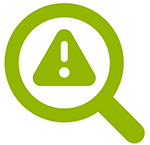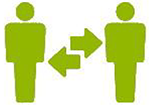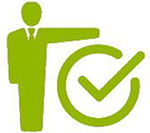Emerging Technology: A Public Regulatory Policy Guide (Print-ready version)
The rapid change in technological advancement is outpacing how we can manage and/orprotect the public health, safety, and welfare from new emerging technologies, including advanced automation and artificial intelligence. To date, much of the discussion of emerging technologies has been about their capabilities and perceived public benefit, but many questions remain unanswered. NSPE believes that the public's interests are best served when licensed professional engineers oversee the design, development, and/or deployment ofemerging technologies to help address uncertainties.
NSPE makes the following safety recommendations based on careful consideration and deliberation. This document, designed as a starting point for adopting standards that protect public safety, provides guidelines to measure the safety readiness of technologies underconsideration for deployment. It is intended for public policy decision-makers, regulators,manufacturers, and others. NSPE strongly encourages the adoption of these recommendations and is available as a resource for information and drafting of regulations.
The following recommendations are made without consideration to priority; however, readers should note that the recommendations are intertwined, requiring collective adoption and implementation.
 Ethics
Ethics
General principles for the ethical development, design, and implementation of emerging technologies should be developed and adopted.
 Risk Assessment
Risk Assessment
To properly assess the risk of emerging technologies that can affect the public health, safety, and welfare, industry standards need to be established. Based on those standards, detailed risk assessments should be performed. When assessing the risk of an emerging technology, the technology should meet all applicable standards and have a demonstrably lower risk of human injury or death than conventional solutions. Furthermore, a higher standard of risk assessment shall be required for the implementation of technologies where human oversight, control, or override is impracticable or impossible.
Risk assessment of automated systems should also consider the concept of the single point of failure, in which the failure of one part of a system can cause the failure of the entire system. Single-point failures should not increase human risk, nor require human intervention to avoid increasing human risk. These single-point faults should be detectable and appropriate indicators should be set to allow timely repair.
 Standards
Standards
The public interest is best served when industry follows adopted standards. For example, the Federal Motor Vehicle Safety Standards regulate the production of passenger motor vehicles. Similarly, standards for specific emerging technologies should be developed with input from appropriate technical and professional societies along with other public stakeholders.
 Transparency
Transparency
In the development of emerging technologies, innumerable decisions are made that could affect the public health, safety, and welfare. These decisions should always be open to discovery and debate. Employees who raise questions about public safety should be protected from retaliation.
 Accountability
Accountability
As technologies are developed, developers should provide their rationale to justify decisions that were made, such that the public knows that their health, safety, and welfare are being protected. Safeguards against all potential misuses and risks should be implemented, and laws should be adopted to enforce adherence to standards and procedures. Licensed professional engineers should be placed in positions of responsible charge to oversee critical areas in the development, design, evaluation, certification, and implementation of a given technology.
 Third-Party Verification
Third-Party Verification
Before the launch of a technology that could affect the public health, safety, and welfare, a demonstration of safe operation should be required. Third-party verification should be performed by a licensed professional engineer or others who are appropriately qualified to perform such evaluations. Such demonstrations should test a variety of probable case scenarios, as might be reasonably expected based on the risk assessment.
Note: The use of the word “should” throughout this document is a recognition that this is a policy guide, not a legally binding document. However, when the substance of this policy guide is enacted into law or regulation, it is NSPE’s position that the word “shall” be inserted in place of the word “should” throughout.
Reference Documents
Ethically Aligned Design, First Edition, IEEE, 2018.
Risk Management Handbook, US Department of Transportation, Federal Aviation Administration, 2009.
U.S. Leadership in AI: A Plan for Federal Engagement in Developing Technical Standards and Related Tools, US Department of Commerce, National Institute of Standards and Technology, August 9, 2019.


